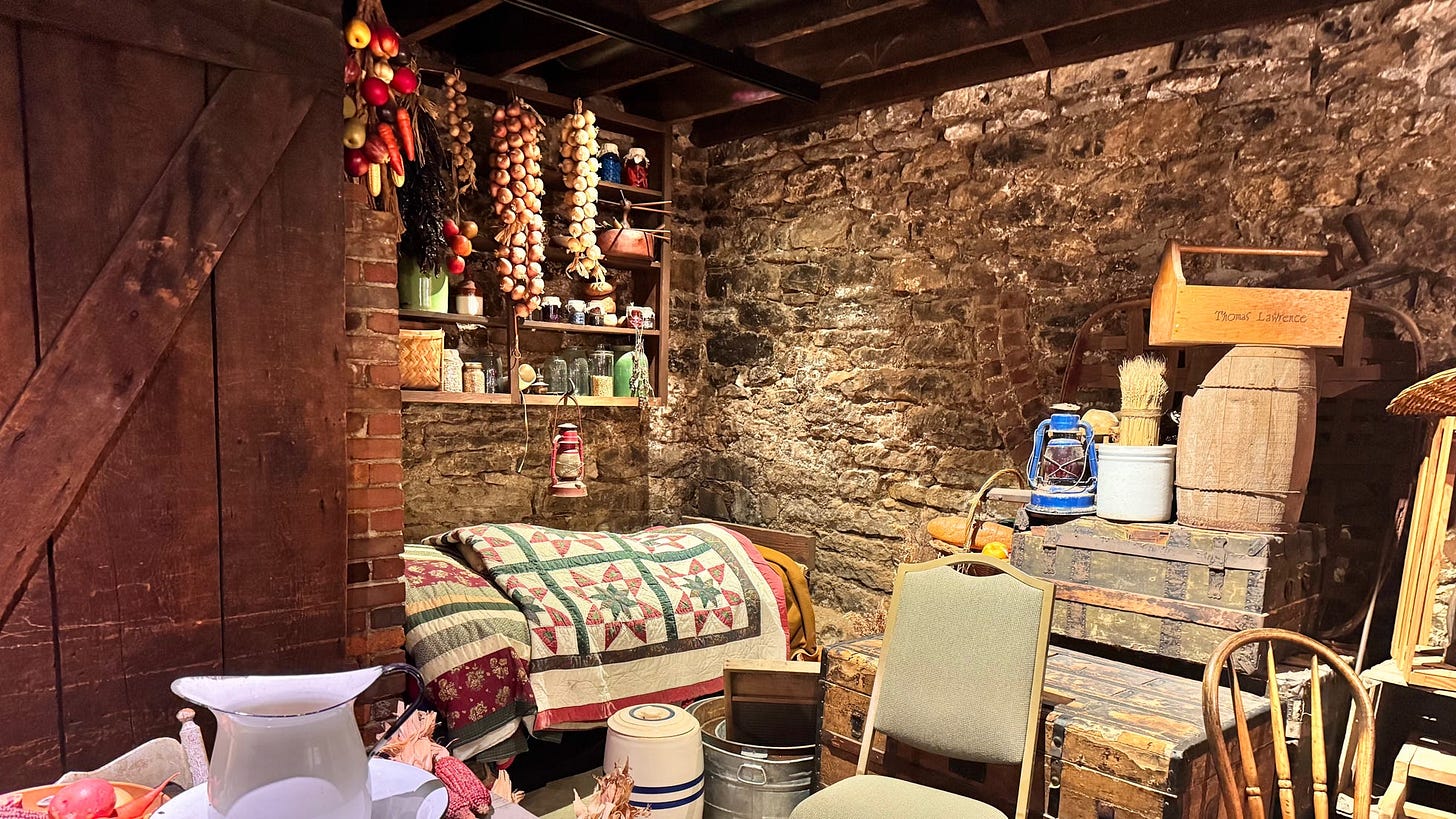Steady in the Heartland
Predictions for AI adoption, Pareto probabilities, and a future for everyone.
To predict the future, look to the past.
Founded in 1812, Columbus became the capital of Ohio not because of what it was, but because of where it sat. Chosen for its central geography, it wasn’t a port city or a steel town. It didn’t boom. It was built slowly, steadily, stubbornly.
By the early 1900s, it became a hub for insurance, banking, manufacturing, and education. Ohio State University blossomed on this fertile ground. While other cities rose fast and fell hard, Columbus diversified early and aged well. When deindustrialization gutted the Rust Belt, Columbus kept humming.
Columbus is steady in the best way: a symbol of heartland America’s quiet strength.
Today, Columbus is a city with clean sidewalks, elegant brick homes, and a surprising number of Fortune 500 companies. The largest city in Ohio, it wears its ambition with restraint: a test market for brands, a proving ground for ideas. It’s a fitting backdrop for a reflection on the arc of human progress: a place where change is deliberate, transformation is architected, and past and future just sit a few blocks apart.
I. A Brief History
Last Sunday, I flew into Columbus for work. On a free Thursday afternoon, I wandered into the Kelton House, a Victorian-era home that once served as a stop in the Underground Railroad. The Keltons were abolitionists. Their home, erected in 1852, was designed with the best that money and taste could buy in their time.
In the master bedroom was a hip bath: an upgrade, I was told, from the once-weekly bath routine. Water had to be drawn from a well, heated over fire, and used by the entire family in sequence: father, mother, then all five children. In the parlor stood a reginaphone, an ornate music box the size of furniture. It played one song.
In the entryway, a grandfather clock required daily winding. A petite armoire hung only a few garments. When Oscar Kelton was killed in battle in the Civil War, his father traveled by horse to bring his remains home. Despite their relative wealth, the Keltons lived harder, more physically limited lives than the average American today.
Limitations weren’t just mechanical. Women were expected to remain in the home. Atop the house was a widow's walk, a narrow rooftop balcony where women could get fresh air without leaving. (Literally a platform so women could take a few steps and breathe.) One of the daughters of the family had traveled to Japan, Yugoslavia, and all around the world by ship. She chose to remain unmarried. In an era of Victorian restraint, this was the only way to see the world for herself.
Still, inside this world, the Kelton family broke the law to do what was right. When the Fugitive Slave Act made it illegal to assist enslaved people escaping to freedom, they defied it to shelter the vulnerable in their basement anyway. Emancipation was won by those who refused to accept the status quo.
This, too, is progress: choosing justice over comfort.
II. The Arc of Progress
When we forget to look closely, it’s easy to equate progress with better toys: faster planes, smarter phones, more powerful LLMs that can write our emails. The illusion of incremental progress is built on the premise that comfort or efficiency is the goal: schedule an Uber from the runway, complain when Netflix is slow to stream, DoorDash dinner on demand, wear fast fashion sewn in countries we can barely find on a map. But efficiency is a false God. I think it’s actually closer to what Columbus embodies as a city: the union between moral progress and mechanical innovation.
In the two centuries since the Kelton family home was built, we didn’t just invent indoor plumbing and 20th century suffrage; we rewired the human belief that hygiene is basic, women have the right to work and vote, and laws must answer to justice.
Silicon Valley loves to preach disruption as gospel and tools as progress. But tools are only as meaningful as the Gods they serve.
In April, Sundar said 30% of code at Google is now generated by AI, up from 25% last October. Zuckerberg predicts AI will replace mid-level engineers at Meta by 2025 (he’s coming to replace our friends, too). Klarna’s CEO bragged about replacing humans before discovering humans are still needed. Sam Altman plays the arsonist (creating machines so sophisticated we can no longer tell them apart from humans) and the firefighter (creating orbs that, um, scan our eyeballs to verify we are human).
“Foundation models could stop development today. It would take us years to catch up.”
This week in Columbus, what I heard from enterprise customer leaders sounded less like a sprint towards obsolescence and more like a steady, deliberate path to inclusion. Fortune 500 leaders in the Midwest are less concerned with technology and tools than they are with people, process, and workforce adoption.
“Foundation models could stop development today, and it would still take us a few years to catch up on people and process transformation,” said one.
“Our CEO believes human-to-human relationships will still be the most important thing in business”, said another. “The ELT [Executive Leadership Team] has mandated a people-first approach to all new AI tools coming through the door.”
“We have a broad-based AI RFP to evaluate new tooling,” said a third. “The majority of AI experiments won’t make it to production, but we want our people to see where these tools are headed. We can’t trust a black box to run enterprise applications, but we believe a platform shift is underway. We have many teams working together to make sure the data guiding our proprietary models is trustworthy and governed.”
“Human relationships will still be the most important thing in business.”
The leaders of century-old enterprises aren’t optimizing humans out of the equation but retraining them, reassigning them, and betting that human judgement will still matter when the AI dust settles.
III. Pareto Probabilities
Lindy’s Law says: the longer something’s survived, the longer it’s likely to endure.
To predict how long something will survive into the future, simply look at how long it’s lasted into the present. In mathematics, this effect corresponds to a Pareto distribution. Tech giants today are no older than Microsoft, which celebrated its 50th anniversary last month. Meta (née Facebook) is 21 years old, barely of legal drinking age. OpenAI will celebrate its 10th birthday this December.
Most Fortune 500 companies have been around for much longer. Last year, the average Fortune 500 was 83 years old. Some have been around long enough to see the Civil War, rebuild in Reconstruction, weather two World Wars, survive the Great Depression, navigate desegregation, digitization, globalization and remain in business. Silicon Valley often forgets what the Midwest quietly remembers: longevity comes not from chasing change, but from recognizing what stays the same.
“We don’t shrink the team. We expand what’s possible.”
I recently had the privilege of speaking with a public company Chairman. He said:
People who say ‘we’re going to need fewer engineers’ fundamentally misunderstand capital allocation. If engineers become 30% more efficient, we find 30% more gaps, build 30% more product. We don’t shrink the team. We expand what’s possible and bring people along.
The goal of efficiency isn’t to replace humans or remove seats from the table, but to redeploy talent to the edge of possibility. We aren’t playing a game of musical chairs. The winner isn’t the last person in the last chair. If that happens, we all lose.
IV. Losing the Script
Tech is, by definition, focused on building what’s new, what's next. But not everything inefficient is broken. Not everything old should be discarded. When we treat all friction as failure, we sand down parts of life that make it uniquely human: the Kroger cashier who knows our names, the Cardinal Health nurse who remembers our parents’ charts, the Nationwide agent who helps us breathe through catastrophe.
These aren’t merely transactions in a faceless ledger of goods for services, but acts of recognition in our shared humanity. Against a backdrop of headlines like:
AI is coming for our jobs (Fiverr)
AI is coming for our friends (Meta)
AI is coming for our contract work (Duolingo)
AI use should be a reflex, not a choice (Shopify)
Leaders at the helm of America’s largest, most enduring businesses are keeping a steady hand on the wheel. In Silicon Valley, too many executives treat headcount as a ballast and AI as the blade. Efficiency becomes euphemism for elimination. Humans aren’t removed because the work is gone, but because the narrative has shifted: if AI can do it, it should. The subtext: we see people as overhead, not advantage.
In this crude view, AI isn’t a tool to empower workers, but a weapon to outgrow them. Engineering is “optimized”, support “automated”, marketing “augmented”, until no one’s left but the venture capitalist who funded it. That’s just profit dressed up as purpose. I think the real existential risk that AI safety researchers miss isn’t machines replacing us, but us forgetting why we need one another at all.
V. A Future for Everyone
I’m finishing up this reflection on my 4-hour flight home. A few thoughts:
Good teams want to do great work. The best leaders, teams, and companies will be those that paint a picture for how we can all contribute to that future.
Fortune 500 CEOs are taking a long view to how work happens, mandating a human-first approach to business and workforce transformation.
Visionary companies will meet the moment by helping everyone see where they fit, being generous, and creating the conditions for everyone to do their best work.
Thanks to the work of the Junior League of Columbus, the Kelton House stands today as a time capsule of discomfort and defiance in the pursuit of real progress. We no longer wind clocks, no longer wait our turn in a shared bath, no longer ration music, no longer traverse the Atlantic by boat, no longer restrict women’s movement, no longer defy the law to shelter fellow Americans in our basements and carriage houses.
Every privilege we enjoy today was once a radical innovation.
Every radical innovation today is a potential baseline tomorrow.
If history’s any guide, the future won’t belong to tools and technology. It’ll remain in the hands of people. This week, I met some fantastic business leaders who are building that future with care and bringing others along. And if we get it right, future generations will walk through our homes and think: This? This was just the beginning.








